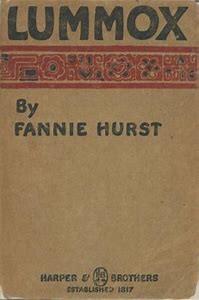 Banned books: No 12: Lummox by Fannie Hurst
Banned books: No 12: Lummox by Fannie Hurst
Found in the Summer 1924 issue of Now & Then (Jonathan Cape) is this brief announcement:
‘LUMMOX finds new admirers every day. Miss Hurst is expected in England shortly, and many admirers are hoping to meet her. She is a prominent figure in New York literary and dramatic circles and has a number of friends in Europe also. The ‘ ban ‘ of the circulating library still remains, but the book is on sale at the bookshops. The current impression is the third.’
This ‘ban’ is a bit of a puzzle. The journalist for Now & Then places the word in quotation marks, which suggests that although Mrs Hurst’s book was in the shops, it was not available for borrowing in certain circulating libraries, though these libraries are not specified. Nor is it clear whether these libraries are in the U.S. or the U.K. A thorough online trawl has revealed nothing on this issue.
At the time Fannie ( or Frances ) Hurst, as the report suggests, was an immensely popular, best-selling American author of rather sentimental and melodramatic novels, many of which had been adapted for the cinema. It has been claimed that she accepted $1m for the film rights of one particular novel. As for the problematical Lummox there seems little in this tale of a young female immigrant who is exploited and abused by her rich employers that could possibly offend even the most delicate sensibilities of an average circulating library subscriber. However, Hurst’s proto-feminism and support for the oppressed in society might have touched a few nerves among members of the wealthy middle class in post-war Britain. [RR]

Could the ban have been by Hurst on the circulating library/ies, rather than vice versa? I couldn’t find any evidence of that either, but this was a consolation: “Leon Trotsky […] proved that he had memorized [Lummox] by reciting long passages to her.” ..from Susan Koppelman’s introduction to her selection The Stories of Fannie Hurst (The Feminist Press at CUNY, New York 2004)